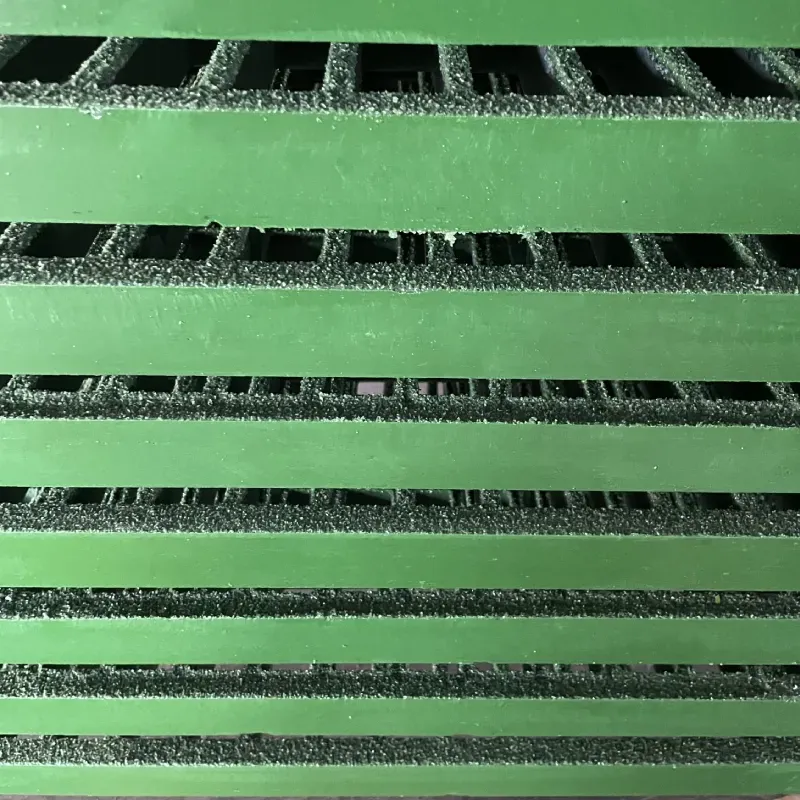loading...
- No. 9, Xingyuan South Street, Dongwaihuan Road, Zaoqiang County, Hengshui, Hebei, China
- admin@zjcomposites.com
- +86 15097380338
- Welcome to visit our website!
frp handrails
The Rise of FRP Handrails A Modern Solution for Safety and Aesthetics
In today’s construction and design industry, safety and aesthetics are paramount. Among the innovative solutions that have emerged is the use of Fiber Reinforced Polymer (FRP) handrails. These handrails, which combine the lightweight yet durable properties of polymer with the strength of fiber materials, present a significant advancement over traditional handrail systems. This article explores the benefits, applications, and considerations of FRP handrails in various settings.
What Are FRP Handrails?
FRP handrails are made from a composite material composed of a polymer matrix reinforced with fibers, usually glass or carbon. This combination results in a product that is not only lightweight but also highly resistant to corrosion, UV degradation, and physical impact. Such characteristics make FRP handrails an ideal choice for both indoor and outdoor applications.
Advantages of FRP Handrails
One of the primary advantages of FRP handrails is their incredible durability. Unlike metal or wood handrails, which can rust or rot over time, FRP handrails offer a longer lifespan with minimal maintenance. This durability translates into cost savings over time, as the need for replacement or extensive upkeep is significantly reduced.
Another significant benefit is their lightweight nature. FRP handrails are considerably lighter than traditional materials, making them easier to transport and install, which can save both time and labor costs during construction projects. This quality not only facilitates ease of use but also allows for the creation of more intricate and elegant designs which might be impractical with heavier materials.
Safety Considerations
Safety is a critical factor in the design and implementation of handrails. FRP handrails meet or exceed the stringent safety standards set by various regulatory bodies. Their non-conductive nature makes them an excellent choice for environments where electrical safety is a concern, such as in power plants or chemical processing facilities.
frp handrails

Moreover, FRP handrails can be designed with slip-resistant surfaces to prevent accidents in slippery conditions. This safety feature is invaluable in public spaces, where the risk of slips and falls can lead to serious injuries. The customizable nature of FRP allows for various colors and finishes, enhancing visibility and compliance with safety regulations.
Applications of FRP Handrails
The versatility of FRP handrails makes them suitable for a wide range of applications. In the commercial sector, they are often used in shopping malls, office buildings, and hospitals. Their aesthetic qualities, combined with their durability, make them a popular choice for architects and designers looking to enhance the visual appeal of their projects while ensuring safety.
In industrial settings, FRP handrails are ideal for environments exposed to harsh chemicals or corrosive elements. They are commonly found in water treatment facilities, chemical plants, and marine applications, where resistance to corrosion is crucial. Additionally, their lightweight properties make them easier to handle in these challenging environments.
Environmental Considerations
As the world becomes more aware of environmental sustainability, FRP handrails are gaining attention for their eco-friendly attributes. Many manufacturers are now producing FRP from recycled materials, and the long lifespan of FRP products means less waste over time. Furthermore, their resistance to decay and corrosion reduces the need for frequent replacements, contributing to a more sustainable approach in construction practices.
Conclusion
In summary, FRP handrails represent a modern and effective solution for enhancing safety and aesthetics in various environments. Their unmatched durability, lightweight characteristics, and safety features make them a superior choice when compared to traditional handrail materials. As construction and design continue to evolve, the adoption of FRP handrails is expected to increase, showcasing their potential in creating safe and visually appealing spaces. By investing in this innovative technology, builders and designers can contribute to a safer, more sustainable future.
-
The Rise of FRP Profiles: Strong, Lightweight, and Built to LastNewsJul.14,2025
-
SMC Panel Tanks: A Modern Water Storage Solution for All EnvironmentsNewsJul.14,2025
-
GRP Grating: A Modern Solution for Safe and Durable Access SystemsNewsJul.14,2025
-
Galvanized Steel Water Tanks: Durable, Reliable, and Ready for UseNewsJul.14,2025
-
FRP Mini Mesh Grating: The Safer, Smarter Flooring SolutionNewsJul.14,2025
-
Exploring FRP Vessels: Durable Solutions for Modern Fluid HandlingNewsJul.14,2025
-
GRP Structures: The Future of Lightweight, High-Performance EngineeringNewsJun.20,2025
